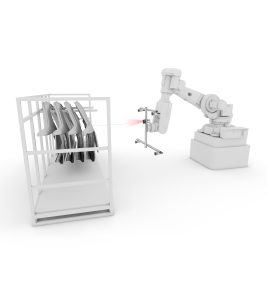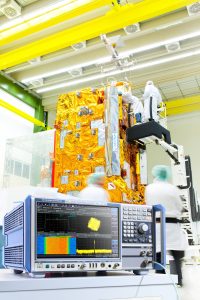TVR Instruments, a specialist technical distributor of low voltage instrumentation and power management products, are introducing a range of measuring and protection devices for use in domestic and industrial EV charging installations at the forthcoming London EV Show on 28th to 30th November at the London ExCel exhibition centre.
FRER Srl, the Italian-based manufacturer of measuring and protection devices, have enhanced their range of earth leakage relays with continued expansion of Type B Earth Leakage Relays for use in installations and sites equipped for electric vehicle charging. A range of three products are suitable for domestic and industrial charge points, roadside EV charging stations or at larger public installations.
The domestic charge point market is serviced with the XTDB019 – a residual direct current monitoring module. The XTDB019 is electrically coupled to a protection unit or switching unit and performs the function of the residual direct current monitoring device, in full compliance with the requirements of IEC 62955.
As an option, the module can also integrate residual alternate current monitoring, in compliance with the threshold and timing requirements for residual direct current – protection devices (RDC-PD). The module is suitable for use in AC charging stations permanently connected to the mains. The XTDB019 module features a 19mm wide cable passage and is available with optional UART communication.
For EV charging station switchboards and applications in large installations FRER produce a series of Type B Earth Leakage Relays. The X35DB, X48DB and X72DB are designed for intuitive and automatic detection of continuous, alternating, and high-frequency leakage currents.
The XxxDB series relays feature continuous and real-time monitoring of the fault level current with a colour display indicating the fault level, and a digital indication of the relevant measurements. These programmable relays work with the FRER toroid design TDB sensor range. The TDB range can be used on networks with a mixed AC and DC powered systems and are available with internal dimensions of 28mm to 210mm. The TDB sensor range detect AC and DC leakage current from 30mA to 50A AC and DC. For higher current systems, up to 3600A, the TDB321050 and the TDB471050 are available.
The tripping level is set in the relay, allowing for one relay to operate across the whole tripping sensitivity span. The relays are available as a 35mm DIN rail mounting module, a DIN48mm and DIN72mm panel mounting. The FRER XxxDB family is compliant with the IEC62423 standard for integral overcurrent protection covering cardiac fibrillation and fire prevention. Additional variants are available with a real time clock for event logging and Modbus RS485 for remote monitoring.
As EV charging installations have developed, the number of distribution points from a single switchboard have also increased. FRER have introduced the COMBI 6, a multi-channel earth leakage relay. The COMBI 6 has been designed for the monitoring and protection of up to six independent systems. A single instrument of three DIN modules size, with a total width of 55mm, enables optimisation of the overall dimensions and efficient installation. Each channel has its own removable terminal block which allows for quick and easy wiring.
Four front keys facilitate immediate programming. Easy to use, push button control enables selection of any of the six monitored channels, while in case of trip intervention, the display will automatically show the last tripped channel. The Combi 6 is available in three versions: Type B only, Type AF only, and mixed Type B / AF with five different input combinations.
A bronze sponsor at the London EV Show, TVR Instruments will be exhibiting a range of FRER measuring and protection devices on Stand EP18 at the London EV Show on 28th to 30th November at the London ExCel exhibition centre.
 Instrumentation Monthly Test | Measurement | Control
Instrumentation Monthly Test | Measurement | Control



 On 17 January 2024 Instrumentation Live and Electronics Live will come together for the very first time at the National Conference Centre (NCC) in Birmingham. The one-day table top exhibitions will present the very best tech under one roof, making it an unmissable day for networking to kick off 2024…
On 17 January 2024 Instrumentation Live and Electronics Live will come together for the very first time at the National Conference Centre (NCC) in Birmingham. The one-day table top exhibitions will present the very best tech under one roof, making it an unmissable day for networking to kick off 2024…








